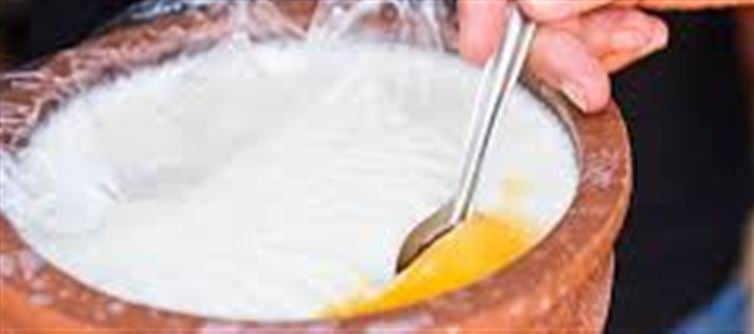
Dahi (curd) is more than just a comfort food in indian kitchens — it’s a probiotic powerhouse. Packed with good bacteria, it aids digestion, boosts immunity, and keeps your gut healthy. But storing it incorrectly can kill these beneficial microbes, reducing its health benefits. Here’s how to store dahi the right way.
1 Avoid Leaving Dahi at Room Temperature Too Long
- The Mistake: Letting dahi sit out for hours after making or buying it.
- Why It’s Bad: Excess heat kills beneficial bacteria and can spoil the curd.
- Fix: Refrigerate within 2 hours of preparation to retain probiotics.
2 Don’t Use Metal Containers
- The Mistake: Storing dahi in aluminum or stainless steel for long periods.
- Why It’s Bad: Metals can react with lactic acid in curd, affecting taste and bacterial activity.
- Fix: Use glass, ceramic, or food-grade plastic containers to store dahi safely.
3 Avoid Frequent Stirring
- The Mistake: Stirring or whisking the dahi repeatedly while storing.
- Why It’s Bad: Each agitation disrupts bacterial colonies and can make the curd watery.
- Fix: Stir gently only when serving.
4 Keep It Sealed Properly
- The Mistake: Leaving the container open or loosely covered.
- Why It’s Bad: Exposure to air allows contaminants and unwanted bacteria to enter.
- Fix: Always cover the container tightly or use airtight jars to preserve freshness.
5 Don’t Freeze Dahi Without Care
- The Mistake: Freezing regular dahi directly in its container.
- Why It’s Bad: Freezing can kill beneficial bacteria and alter texture.
- Fix: If freezing, use small portions in airtight containers, and thaw in the fridge gradually.
Bonus Tip: Serve Fresh for Maximum Benefits
- Consume dahi within 5–7 days of preparation.
- Pair it with fruits, salads, or rice for a gut-friendly meal.
Final Bite: Keep the Good bacteria Alive
Dahi is a natural probiotic that supports digestion, immunity, and overall health. By storing it correctly, you ensure that every spoonful is nutrient-rich, fresh, and full of beneficial bacteria — turning your everyday comfort food into a health booster.
Disclaimer:
The views and opinions expressed in this article are those of the author and do not necessarily reflect the official policy or position of any agency, organization, employer, or company. All information provided is for general informational purposes only. While every effort has been made to ensure accuracy, we make no representations or warranties of any kind, express or implied, about the completeness, reliability, or suitability of the information contained herein. Readers are advised to verify facts and seek professional advice where necessary. Any reliance placed on such information is strictly at the reader’s own risk..jpg)




 click and follow Indiaherald WhatsApp channel
click and follow Indiaherald WhatsApp channel